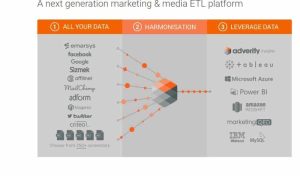
When businesses look at technology options, they can choose between cloud-based services or Software as a Service (SaaS) for their needs. These two related solutions are similar but offer plenty of benefits for business leaders. Selecting the right technology means that you need to understand how these technologies will affect your company’s processes and infrastructure. Along with that, these technologies must provide some value to your customers. Here is everything you need to know about the differences between SaaS and cloud-based services.
A Quick Look at SaaS Versus Cloud
With cloud-based services, the user can manage and customize their software application on a server. A third-party provider remotely hosts that server. Google Cloud, Azure, and Amazon AWS are some of the most popular and reliable providers. With cloud computing, you can access all that data on the server from the internet.
SaaS is similar to cloud-based services. In a few ways, it is considered a subset of those services. SaaS allows users to connect and use cloud-based apps over the internet. This solution lets businesses use the service on a pay-as-you-go or annual subscription basis from a cloud-based service. The infrastructure, software, and data are stored in the service provider’s data center, meaning the provider will manage the software and hardware. With this option, businesses can quickly offer services to their customers. SaaS services are ready to use without much effort.
What Are Cloud-Based Services?
Cloud-based computing delivers hardware and software via the internet. With these on-demand services, businesses can access their applications and servers from a computer, laptop, or smartphone without storing data on a physical hard drive.

While some people think the cloud is a physical location, that is not true. The cloud refers to the idea that any user can access data from a remote location. All cloud-based services need an internet connection to retrieve data or use an online application.
Many organizations will utilize a multi-cloud infrastructure. They will use several cloud platforms to hold their software, hardware, and data. There are several cloud computing models, but the most popular options split the deployment models into three sectors: private, public, and hybrid clouds. There are many examples of cloud-based services, such as IBM Cloud, Amazon Web Services, Dropbox, Slack, Salesforce, Google App Engine, and OpenShift.
What Are SaaS-Based Services?
For many companies, they choose Software as a Service for their cloud computing needs. Businesses can use this service on a day-to-day basis. SaaS is not just for large businesses. Even those small companies can use this solution for their needs. This option will deliver an application as a service, which is hosted in the cloud and ready to use.
Often, the service is available with a pay-per-use or subscription licensing agreement. Businesses can access all of the services through an internet browser. SaaS is known to increase many companies’ overall return on investment. With this option, the business does not have to spend money on maintaining servers or worry about updating the software. The service provider handles those responsibilities. Many companies are seeing the benefits of SaaS. This solution is very cost-effective and has become a tool in communications, sales, customer service, and project management for many companies. A few of the best-known SaaS services include HubSpot, Zendesk, and DocuSign.
The Differences Between Cloud-Based and SaaS-Based Services
There are several differences between cloud-based and SaaS services. With cloud services, the user can customize and manage their own applications. SaaS does not allow the user to make any changes since the provider is responsible for updating and managing the applications. For those who want to back up data, it is easier with cloud-based applications. SaaS users don’t have the privilege of data storage while using these services from a provider. Many SaaS businesses will not have control over any servers. Sometimes, the services can be canceled at any time by the provider.
Pros and Cons of Cloud-Based and SaaS-Based Services
Before making a decision, consider the pros and cons of these services. With SaaS, there are lower up-front charges, and these services are quick to set up and deploy. Additionally, users will not have to worry about upgrades or maintaining software since the provider handles those duties. These options allow you to scale your software as your business grows.
However, there is a lack of control over these services. You must rely on the provider to upgrade, maintain, and protect your data. These options are not customizable, meaning you get an out-of-the-box option. In some cases, there could be connectivity requirements and performance issues. If you want a solution that doesn’t require much work on your end, then SaaS could be the best option.
Cloud-based services are cost-effective solutions. You will have complete control over your software, hardware, and data. Like SaaS, cloud-based service is simple, allowing for quick and easy deployment. Along with that, there is more independence with this solution. Cloud-based services are often more reliable than some SaaS solutions.
While cloud-based services might be great, these options are not the best choice for those who are not tech-savvy. There is limited support, and users must have a working knowledge to get their applications up and running. Technical security and performance issues could occur if the user does not have experience with maintaining and upgrading software or hardware.
Which Option to Choose for Your Business Needs?
SaaS and cloud services can provide many benefits. While a cloud-based service may seem convenient, it is not the best solution for those who want to start a business quickly. Many SaaS startup companies want options that do not require more time and effort than necessary. Cloud-based options require the end user to develop and maintain their own applications. With SaaS, it takes some software and hardware responsibilities off your shoulders. Both cloud-based and SaaS-based services are great options for those who want to provide the best experience for their customers. You need to think about which service is the right choice for your business.
By Gary Bernstein

Gary has written for several publications over the last 20 years with his primary focus on technology. He has contributed to sites such as Forbes, Mashable, TechCrunch and several others.
Originally posted on November 16, 2022 @ 11:25 pm


